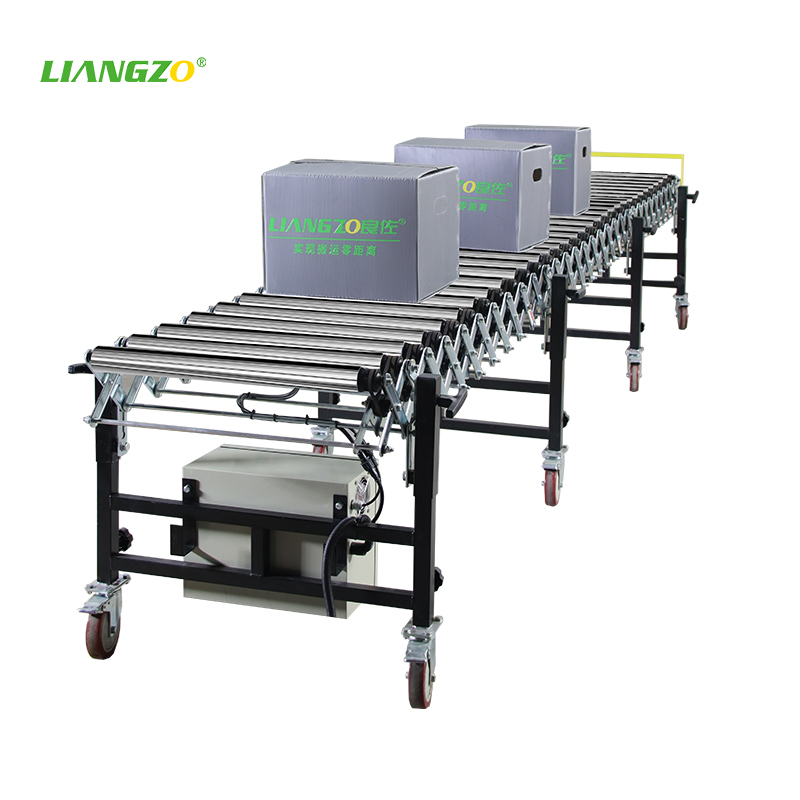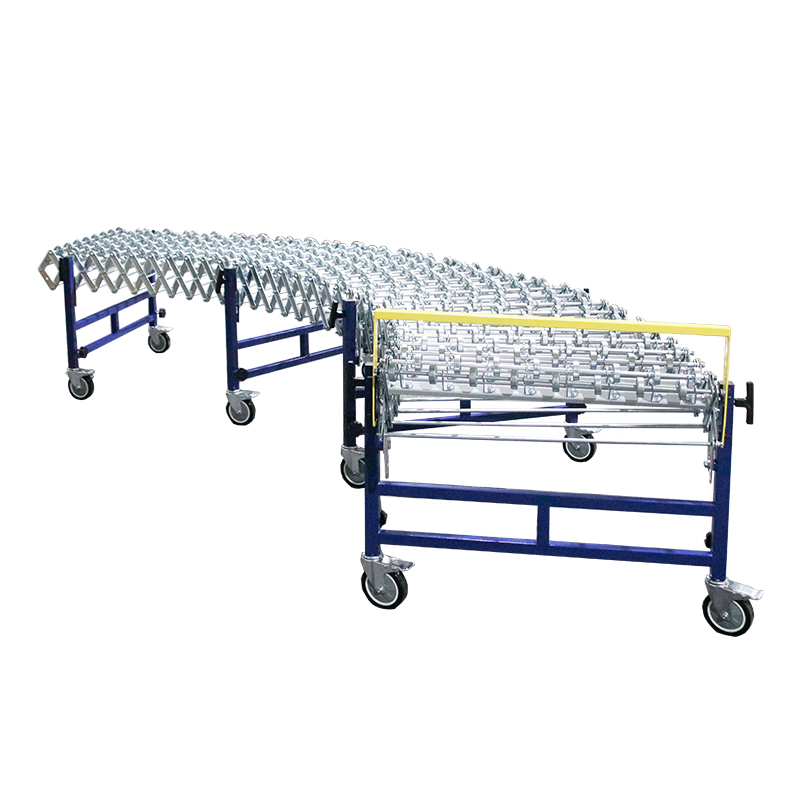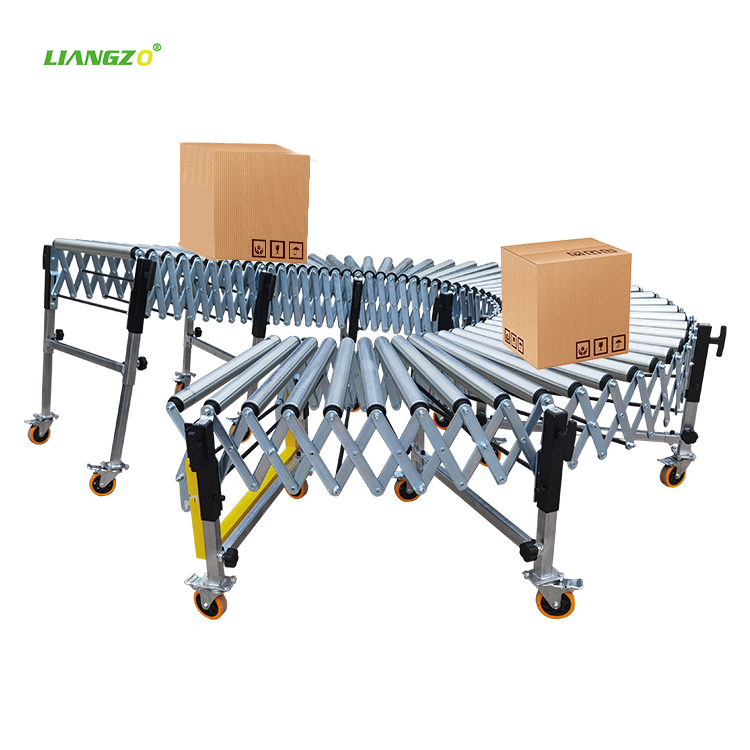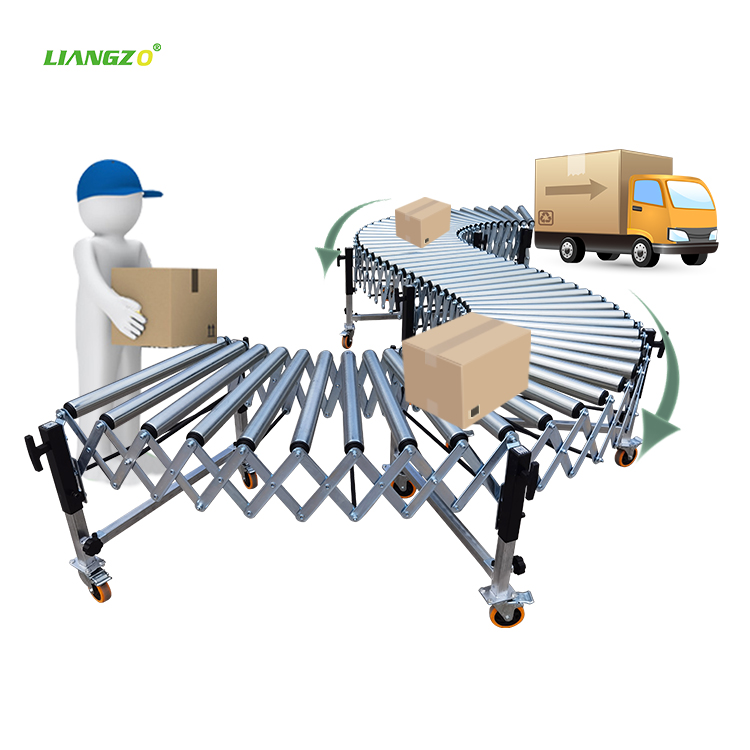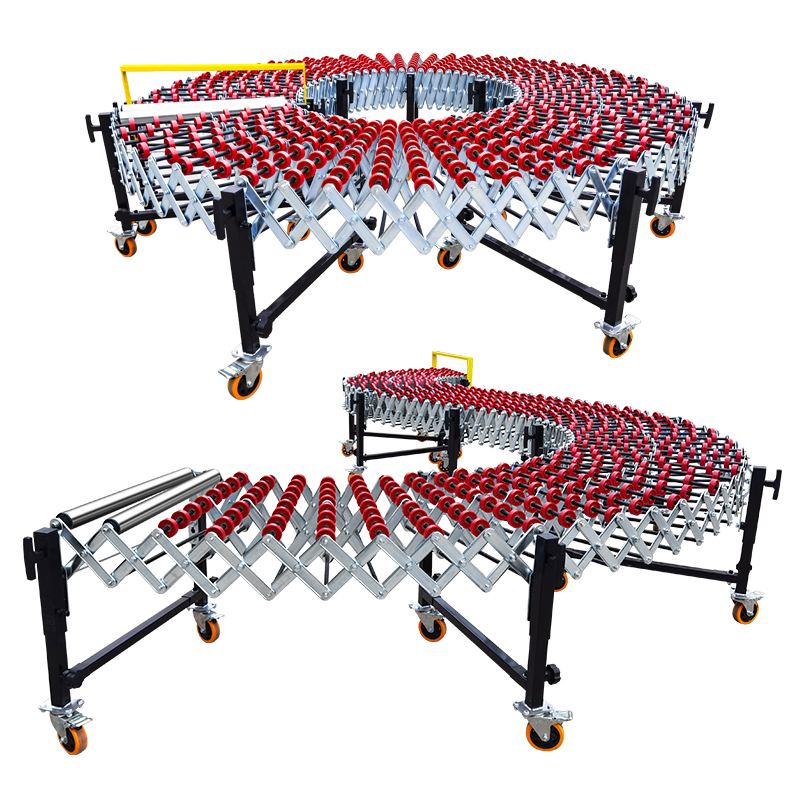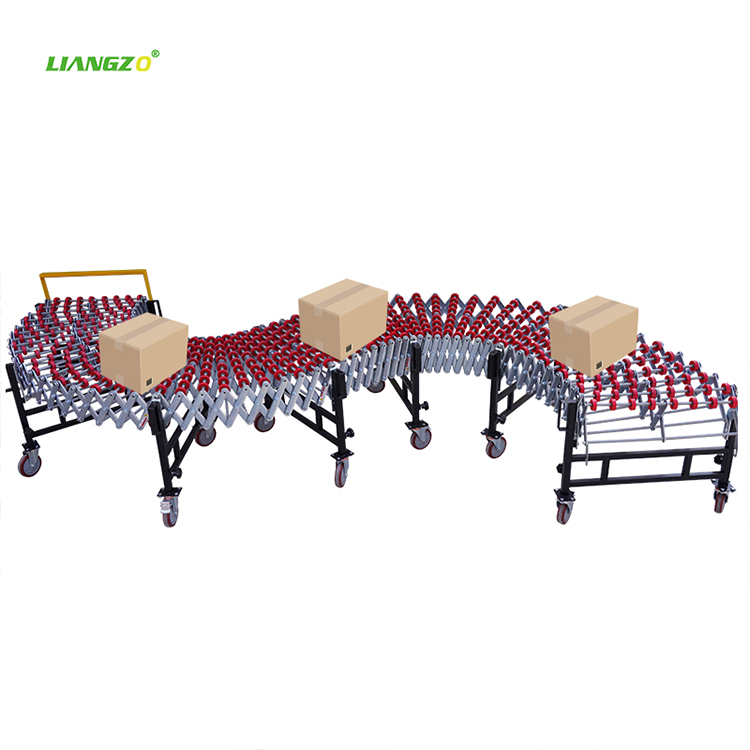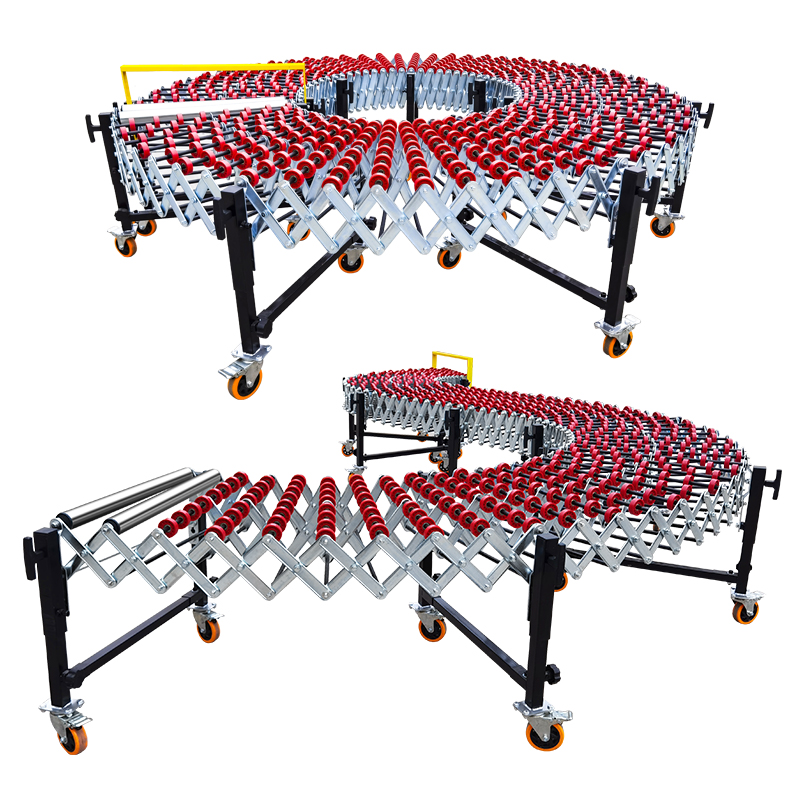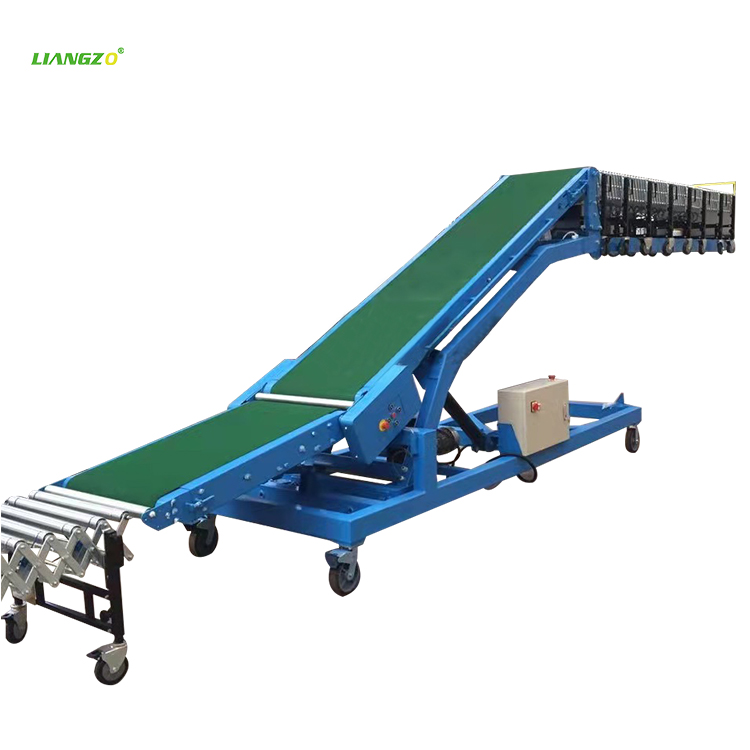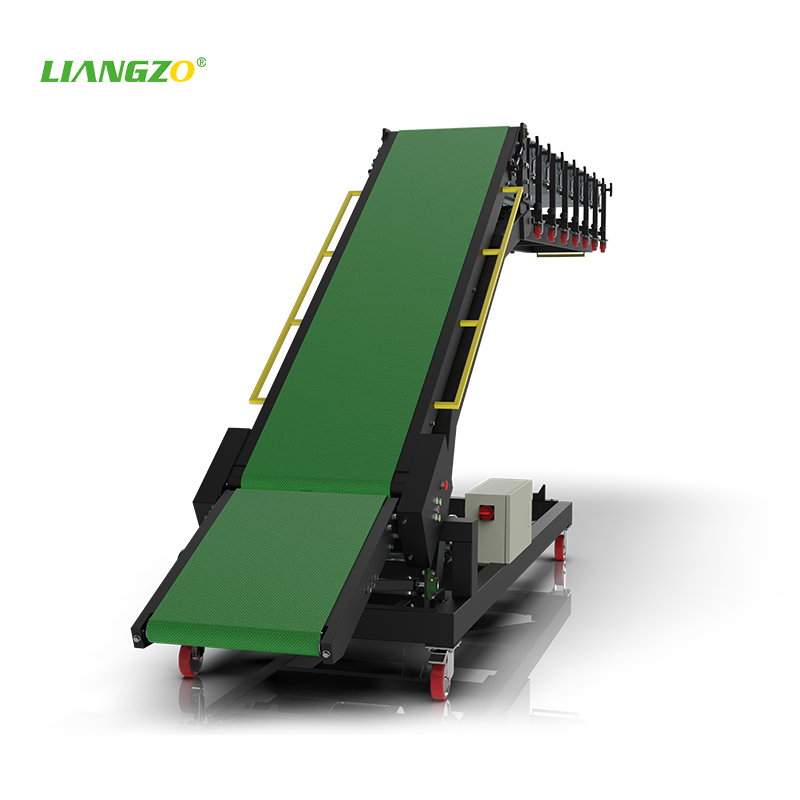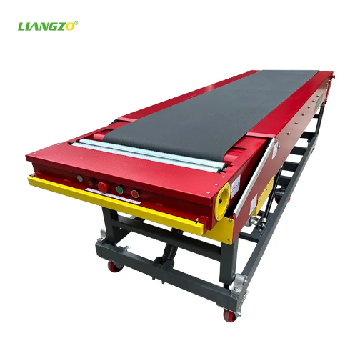1.Fundamental Design Differences
Belt Conveyor Design
Belt conveyors utilize a continuous loop of material - the belt - that rotates around two or more pulleys. The belt itself can be made from various materials including rubber, PVC, urethane, or metal, depending on application requirements. The belt is supported along its length by idler rollers or a solid slider bed, which prevents sagging and maintains the belt's shape. One pulley (typically the head pulley) is powered by an electric motor, creating movement in the belt, while the other pulley (tail pulley) serves as the tensioning and redirecting component.
Key design features of belt conveyors include:
- Continuous flat or troughed surface for product support
- Enclosed or open framework
- Variable belt widths to accommodate different product sizes
- Cleats or sidewalls can be added for inclined applications
Roller Conveyor Design
Roller conveyors consist of multiple cylindrical rollers mounted in a frame at fixed intervals. These rollers can be either powered (driven) or non-powered (gravity-based). In powered roller conveyors, rollers are connected to a drive mechanism (chain, belt, or motorized roller) that provides rotational force. Gravity roller conveyors rely on the natural downward slope and product weight to create movement.
Key design features of roller conveyors include:
- Discrete roller spacing (typically 3-6 inches between rollers)
- Various roller diameters and materials (steel, plastic, or rubber-coated)
- Fixed frame structure with adjustable supports for gradient control
- Zones can be independently powered in complex systems
2.Operational Characteristics
Movement Mechanics
The most fundamental operational difference lies in how products are moved:
Belt conveyors create movement through friction between the continuous belt surface and the product. The entire bottom surface of the product contacts the moving belt, which provides consistent movement across the entire conveyor length. This makes belt conveyors excellent for small, irregularly shaped, or fragile items that might get caught between rollers.
Roller conveyors move products through rotational contact points. Only portions of the product's bottom surface contact the rotating rollers at any given time. This intermittent contact works well for rigid, flat-bottomed items but can cause instability for small or flexible products.
3.Speed and Control
Belt conveyors typically offer:
- Higher maximum speeds (up to 300 feet per minute)
- More precise speed control through variable frequency drives
- Consistent speed along entire conveyor length
- Better positioning accuracy for automation integration
Roller conveyors generally provide:
- Lower maximum speeds (typically 30-90 feet per minute)
- More difficulty maintaining exact speed control
- Potential for speed variation between zones
- Better accumulation capabilities with zone control
4.Load Capacity and Product Handling
Weight Considerations
Belt conveyors:
- Distribute weight across the entire belt surface
- Can handle very small, lightweight items (fractions of an ounce)
- Maximum capacity limited by belt strength and motor power (typically up to several tons)
Roller conveyors:
- Concentrate weight on individual rollers
- Require products to span multiple rollers (typically at least 3)
- Better suited for heavy loads (can handle pallets weighing several tons)
- Minimum product size limited by roller spacing
5.Product Types
Belt conveyors excel with:
- Small parts
- Loose materials (grains, powders)
- Irregularly shaped items
- Fragile products
- Items that might catch between rollers
Roller conveyors work best with:
- Flat-bottomed containers
- Pallets and crates
- Rigid products
- Uniformly sized items
- Heavy loads
6.Maintenance Requirements
Belt Conveyor Maintenance
Primary maintenance concerns include:
- Belt tracking adjustments to prevent misalignment
- Belt tension maintenance
- Pulley and idler bearing lubrication
- Belt cleaning (especially important in food applications)
- Belt replacement due to wear or damage
- More complex drive system maintenance
Roller Conveyor Maintenance
Key maintenance aspects involve:
- Individual roller replacement when bearings fail
- Keeping roller surfaces clean
- Drive chain or belt maintenance in powered systems
- Checking and maintaining proper slope in gravity systems
- Generally easier to access and repair individual components
7.Energy Efficiency
Belt conveyors typically:
- Require more powerful motors
- Have higher continuous energy consumption
- Maintain constant power draw regardless of load
- Experience energy losses from belt flexing and friction
Roller conveyors generally:
- Use less energy for comparable lengths
- Can incorporate gravity sections for zero-energy movement
- Allow zone control to power only loaded sections
- Benefit from newer technologies like motorized rollers
8.Cost Considerations
Initial costs:
- Belt conveyors usually have higher initial costs per linear foot
- Simple gravity roller conveyors are often the least expensive option
- Complex powered roller systems can exceed belt conveyor costs
Operating costs:
- Belt conveyors typically have higher energy costs
- Belt replacement represents a significant long-term cost
- Roller conveyor maintenance costs can be lower
- Labor requirements vary by application
9.Application-Specific Advantages
When to Choose Belt Conveyors
- Food processing (especially baking, meat, produce)
- Small parts assembly
- Packaging operations with diverse product sizes
- Inclined or declined transportation
- Sorting systems requiring precise positioning
- Clean room environments
When to Choose Roller Conveyors
- Pallet handling
- Carton sorting and distribution
- Loading dock operations
- Heavy manufacturing
- Accumulation applications
- Assembly line processes with uniform products
10.Hybrid Systems
Many modern facilities employ hybrid solutions that combine both technologies:
- Belt-driven roller conveyors that use a belt beneath rollers for power
- Belt conveyors with roller beds for heavy load sections
- Transition zones between belt and roller sections
These hybrids attempt to capture the advantages of both systems while minimizing their respective limitations.
11.Conclusion
The choice between belt and roller conveyors depends on numerous factors including product characteristics, throughput requirements, facility layout, and budget constraints. Belt conveyors offer superior versatility for handling diverse product types and precise movement control, while roller conveyors provide better heavy-load capacity and lower energy consumption for appropriate applications. Understanding these fundamental differences enables logistics professionals to design more efficient, cost-effective material handling systems tailored to their specific operational needs. As conveyor technology continues to evolve, both systems are incorporating advanced features like smart sensors and IoT connectivity, further enhancing their capabilities in modern industrial environments.


